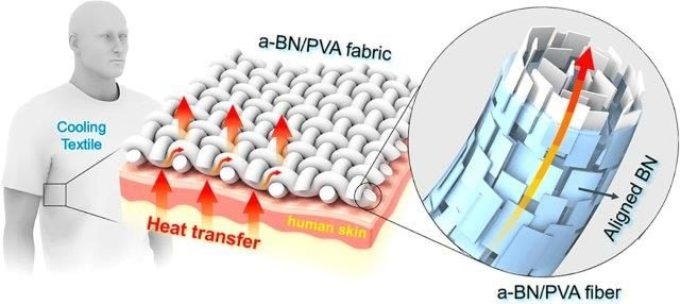Nov 9 2017
People coming in from the heat experience a comfortable feeling in air-conditioned buildings. However, the creation of this comfort comes at a cost to personal expenditure and the environment in the form of greenhouse gas emissions and increased energy bills. Researchers have reported in ACS Nano about the production of a new material for clothing that individuals will one day be able to wear as their own personal cooling unit, without the need for any external energy to power it.
 Scientists have developed a 3-D printable fiber for clothes that can cool you down. Credit: American Chemical Society
Scientists have developed a 3-D printable fiber for clothes that can cool you down. Credit: American Chemical Society
In recent years, functionalized clothes have become the norm. Individuals now have moisture-wicking and smell-proof athletic gear, and tops and shirts coated with a chemical layer capable of blocking ultraviolet rays. However, clothes that help individuals cool down have been harder to obtain. Such attempts, so far, have resulted in materials that combine bulky components, are expensive or need a lot of energy. Liangbing Hu and colleagues at University of Maryland College Park wanted to know if they could develop a more practical option.
The researchers incorporated boron nitride — a material for transferring heat — and polyvinyl alcohol in order to develop a nanocomposite fiber that is capable of being 3D printed and woven into fabric. Testing to simulate the material on skin demonstrated that the composite is 1.5 to 2 times more effective at pushing heat away from the body when compared to pure polyvinyl alcohol or cotton fabrics, respectively. Manufacturing clothes with the nanocomposite thread could enable keeping wearers comfortable and reducing the need to cool complete buildings, the researchers say.
The authors received funds from the U.S. Office of Naval Research - Young Investigator Program, the Advanced Research Projects Agency-Energy (ARPA-E), the U.S. Department of Energy and the China Scholarship Council.